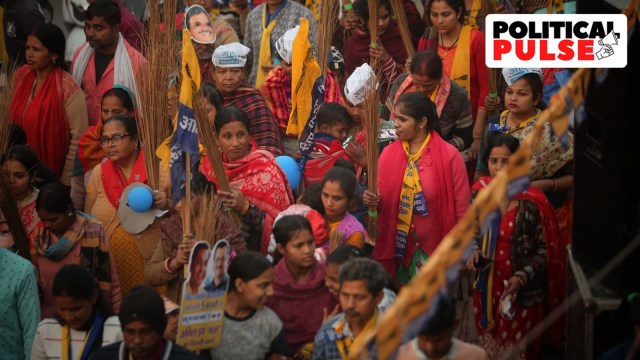An analysis of the Assembly election results, declared on Saturday, shows that the BJP won 48 seats by an average margin of 14,725 votes. Though the AAP was reduced to 22 seats, it recorded an average victory margin of 17,054 votes.

In the 2020 Assembly polls, the BJP’s average margin in the eight seats it won was 12,271 votes, while the AAP’s average margin across its 62 seats was 22,076 votes. Between 2020 and 2025, the BJP was able to record an approximately 2,500-vote bump in its average margin, even as the AAP’s average margin fell by over 5,000 votes.
Story continues below this ad
A breakdown of Delhi’s 70 seats into four categories – Scheduled Caste (SC) seats, Muslim-dominated seats, and urban and rural seats – shows that the AAP’s victory margins were higher than the BJP’s across Muslim, urban and rural seats.
Of the 12 SC-reserved seats, the AAP won eight with an average margin of 11,789 votes. However, the BJP won four with a better average margin of 12,755 votes.
In 2020, when the AAP had won all 12 SC seats, the party had got an average of 76,702 votes in each of these seats and recorded an average winning margin of 29,133 votes. In this year’s election, the party’s average margin was halved and its average votes per seat fell by about 14,000 votes.
The BJP that had not won any SC seats in 2020 and had an average 48,959 votes per SC seat, recorded an increase in its average votes per reserved seat by about 11,000 votes to 59,779 votes this year. Data shows that the voters who detached from the AAP not only voted for the BJP, but a major chunk also went with the Congress. The Congress, which had an average 5,276 votes per SC seat in 2020, improved its tally to 9,045 votes this time.
Story continues below this ad
In the 10 seats where Muslims account for more than 20% of the population, the AAP won seven seats this time with an average margin of 26,371 votes. The BJP won the remaining three seats with an average margin of 10,223 votes. In 2020, the AAP had won nine of these seats with an average margin of 41,904 votes and got an average 77,699 votes per seat. The BJP had won just one Muslim-dominated seat – Gandhi Nagar – that year with a margin of 6,079 votes, after securing 48,824 votes here.
While Delhi is considered predominantly urban, there are considerable rural pockets in at least 18 Assembly seats. Of the remaining 52 urban constituencies, the BJP won 35 this time with an average margin of 13,668 votes. The AAP won the remaining 17 seats, but with a bigger average margin of 16,176 votes.
In 2020, the AAP had won 45 urban seats with an average margin of 22,076 votes, while the BJP had won the remaining seven seats with an average margin of 12,271 votes.
While in 2020, the AAP had secured an average 66,731 votes per urban seat, the BJP had managed 49,948 votes and the Congress 5,628 votes. In 2025, though the BJP improved its average votes per urban seat to 57,724 and the Congress to 7,392; both parties dented the performance of the AAP, which fell to 53,507 votes per urban seat. This is an indication that the urban voter shifted from the AAP to the BJP, and in parts of Delhi to the Congress as well.
Story continues below this ad
Of the 18 rural seats, the BJP this time bagged 13 with an average winning margin of 17,128, while the AAP won the remaining five seats by an average margin of 19,296. In 2020, the AAP had won 17 rural seats with an average margin of 22,279, while the BJP won the only other rural seat by a margin of 3,719 votes.
Between 2020 and 2025, the AAP’s average votes per rural seat fell from 83,584 to 72,006. The BJP, however, improved from an average 63,414 votes per rural seat in 2020 to 79,158 this year. The Congress, too, recorded an improvement from 7,259 to 11,735.

































